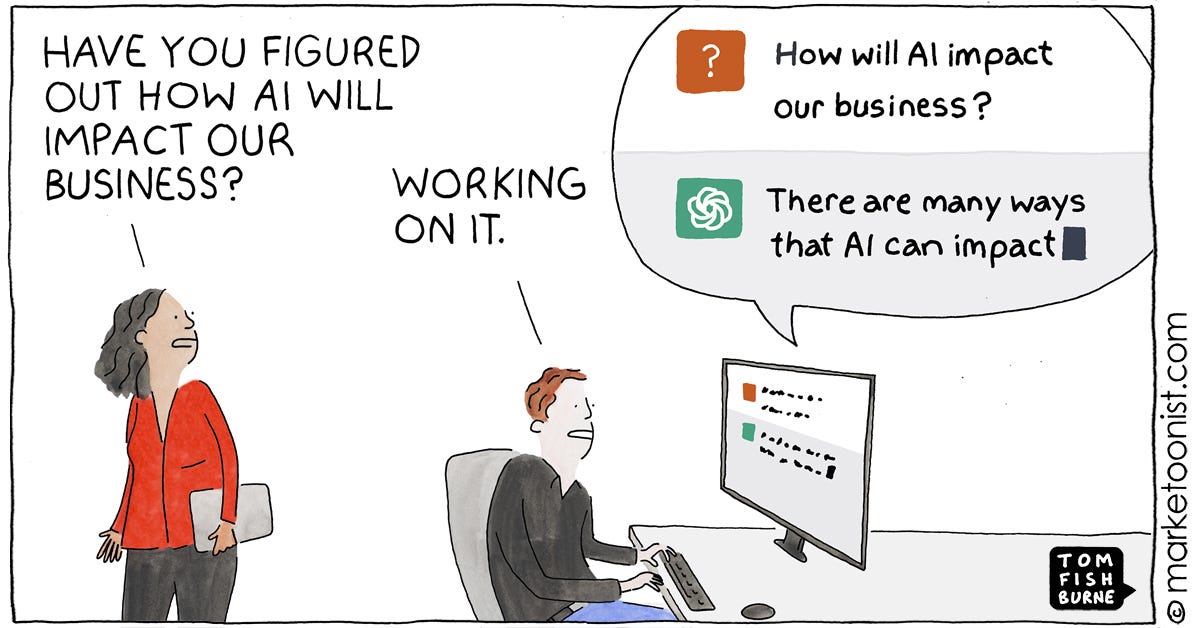Generative AI in 2035
Or, how to think in an era of exponential change.
Let’s get this over with quickly – I have zero clue what generative AI will enable us to do in August 2023, let alone by 2035. But the truth is, no one does.
Last week, Bill Gates called it “as fundamental as the creation of the PC, the Internet and the mobile phone.” Within ten days, Elon Musk and 1,000 other tech leaders (including Apple co-founder Steve Wozniak, and Emad Mostaque, the CEO of Stability AI) signed an open letter asking AI labs to pause their training of more powerful systems to reduce “catastrophic and existential risks”.
Let’s reiterate. No one knows WTF is going on.

However while I might not be an expert in AI, I do know how to think about change.
I have spent over a decade drinking from the innovation firehose in my work helping businesses, governments and NGOs identify trends in order to stay ahead of people’s expectations.
The counter-intuitive secret to thinking about change and what it means for your organization? To think about what won’t change.
Specifically, think about the fundamental human needs and wants that your organization caters to today, that you will still cater to in a decade’s time. Because if you are clear about the job that you do for your customers or for citizens, then you will have a framework through which to view all this exponential change that we are witnessing right now.
As Jeff Bezos says,
I very frequently get the question: 'What's going to change in the next 10 years?' And that is a very interesting question; it's a very common one. I almost never get the question: 'What's not going to change in the next 10 years?'
And I submit to you that that second question is actually the more important of the two – because you can build a business strategy around the things that are stable in time. ... [I]n our retail business, we know that customers want low prices, and I know that's going to be true 10 years from now. They want fast delivery; they want vast selection.
It's impossible to imagine a future 10 years from now where a customer comes up and says, 'Jeff I love Amazon; I just wish the prices were a little higher,' [or] 'I love Amazon; I just wish you'd deliver a little more slowly.' Impossible.
And so the effort we put into those things, spinning those things up, we know the energy we put into it today will still be paying off dividends for our customers 10 years from now.
When you have something that you know is true, even over the long term, you can afford to put a lot of energy into it.
So before you rush off and ask, 'what’s our AI strategy?’, first ask yourself whether everyone in your organization has complete clarity over the fundamental needs and wants you are focused on?
Then you can lean into exploring how those needs or wants are being changed by AI, and which new AI tools you might use to serve these cheaper, faster and/or better.
We’ll explore what that looks like in practice in next week’s newsletter.
My new book, The Future Normal: How We Will Live, Work & Thrive In The Coming Decade, explores 30 trends, from continuous glucose monitoring to job sharing, through this same lens.
Order your copy now.
Thanks for reading,



